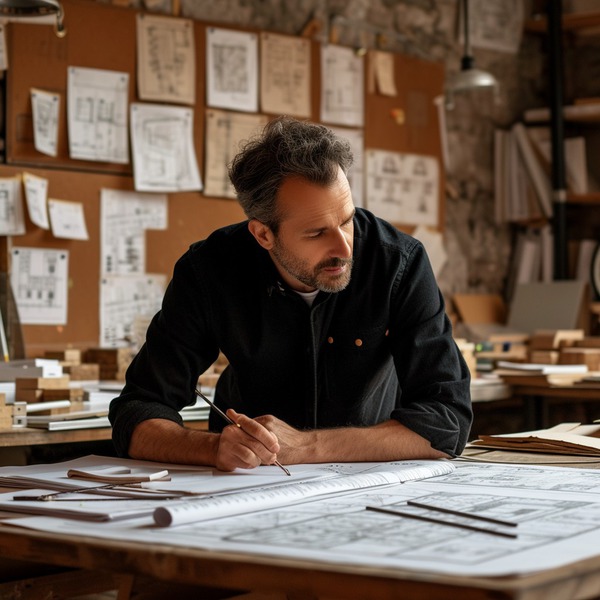How to Select High-Quality Materials for Your Interior Design Project
Selecting suitable materials for your interior design project can greatly affect your space’s final look, feel, and longevity. It’s about more than just picking colors and patterns—high-quality materials bring both aesthetic appeal and durability. With so many options available, choosing the best materials can feel overwhelming, but it doesn’t have to be. By focusing on key factors, you can make choices that suit your design vision, budget, and long-term needs.
In this article, we’ll explain how to select high-quality materials for your interior design project while balancing beauty, function, and practicality.
How to Select High-Quality Materials
Selecting high-quality materials for your interior design project involves three main factors: durability, aesthetics, and functionality. By considering these, you’ll have a clear guide for choosing the best materials for each aspect of your space.
Here are some simple steps to help you choose wisely:
1. Determine the Room’s Purpose
The room’s function plays a significant role in material selection. For example, a kitchen needs heat-resistant and easy-to-clean surfaces, while a living room might prioritize materials that provide warmth and comfort. High-traffic areas require more durable materials, while rooms like bedrooms can benefit from softer, more delicate textures.
-
Kitchens and bathrooms need moisture-resistant materials like tiles, sealed wood, or stone.
-
Living rooms and bedrooms often benefit from plush fabrics, softer wood finishes, and warm tones.
-
High-traffic areas like entryways or hallways may require sturdier materials like stone or durable hardwood.
For example, if you want to incorporate Art Deco interior design solutions into your project, you’ll want to focus on luxurious materials like marble, lacquered wood, and polished metals. These materials not only fit the style but also offer long-term durability.
2. Consider the Material’s Durability
No matter the style, durability is critical to ensuring your materials will last. High-quality materials often come with a higher price tag, but they are worth the investment because they stand the test of time. Look for materials proven to withstand wear and tear, especially in high-traffic areas or homes with kids and pets.
-
Hardwood floors are a classic choice for durability, as they can be refinished multiple times over their lifespan.
-
Natural stone like granite or quartz is ideal for countertops due to its resistance to scratching and heat.
-
High-performance fabrics or leather are good choices for upholstery, especially in family rooms.
Opting for high-quality materials in these critical areas can prevent costly repairs or replacements.
3. Match Aesthetics with Practicality
While appearance is important, materials must function in your design space. It’s easy to fall in love with a material for its look, but consider how it will perform over time. Will it be easy to maintain? Will it wear well in the type of environment you’re designing for?
-
Choose materials that complement your interior design style, but don’t sacrifice practicality. While white marble is beautiful, it may stain easily in a busy kitchen. Quartz or granite may provide the same visual effect with more durability.
-
Ensure the materials match the rest of the room. Mixing too many different materials can create a disjointed feel, so it’s best to stick with a cohesive palette.
For example, if you’re drawn to modern bohemian design for interiors, you may be looking at natural materials like rattan, wood, and cotton. These materials align with the bohemian style, but choosing durable options that won’t wear out quickly in high-traffic areas is essential.
4. Look for Sustainable Options
Sustainability is becoming a priority for many designers and homeowners. Using eco-friendly materials not only reduces your environmental footprint but can also add value to your home. When selecting materials, look for options sourced responsibly or with minimal environmental impact.
-
Reclaimed wood or recycled materials are great for sustainable flooring.
-
Bamboo and cork are renewable resources that make excellent, durable flooring choices.
-
Low-VOC paints and finishes ensure harmful chemicals don’t compromise your home’s air quality.
Sustainable materials help the environment and often offer the same, if not better, performance than traditional options.
5. Get Samples and Test Them Out
Before making your final decision, always request samples of the materials you’re considering. This allows you to see how they look in your space and how they’ll hold up under real-world conditions. It’s especially important to test for texture, color, and feel in the room’s actual lighting.
-
Place flooring samples next to your wall colors to see how they interact.
-
Test fabric swatches by rubbing them to see how they stand up to wear.
-
Place countertop samples in the space to ensure they complement your cabinets and lighting.
This step ensures you’ll be happy with your space’s final look and feel.
Benefits of Using High-Quality Materials
Using high-quality materials in your interior design project offers several long-term benefits. Here’s why it’s worth investing in them:
Durability and Longevity
High-quality materials last longer and maintain their appearance better over time. This means fewer repairs, replacements, and maintenance, saving you money and hassle in the long run.
Improved Aesthetic Appeal
High-end materials often look better and can make your design project stand out. They add a sense of luxury and attention to detail that lower-quality materials can’t replicate.
Increased Home Value
Investing in durable, high-quality materials can significantly increase your home’s value. Whether you plan to stay in your home for years or sell it in the future, premium materials will enhance its appeal and resale potential.
Better Comfort and Functionality
Materials like high-quality fabrics, well-crafted cabinetry, and durable flooring don’t just look great—they also feel better and make your home more functional for daily life.
Where to Source High-Quality Materials
Choosing the right supplier is just as important as picking the suitable materials. When sourcing materials for your interior design project, you’ll want to work with a supplier that offers a range of quality options and reliable customer service.
One reliable option is Coburn’s Showroom, where you can find a wide selection of high-quality materials for your next interior design project. From flooring to fixtures, they offer a curated range of products that fit your design style and budget.
Wrapping Up
Selecting high-quality materials for your interior design project is essential for creating a space that looks great and stands the test of time. By focusing on durability, aesthetics, and functionality, you can choose materials that elevate your design and ensure long-lasting satisfaction. Remember, a well-designed interior relies on materials that match the room’s purpose, offer practical durability, and align with your design vision. With the right materials in place, your project is set for success.



